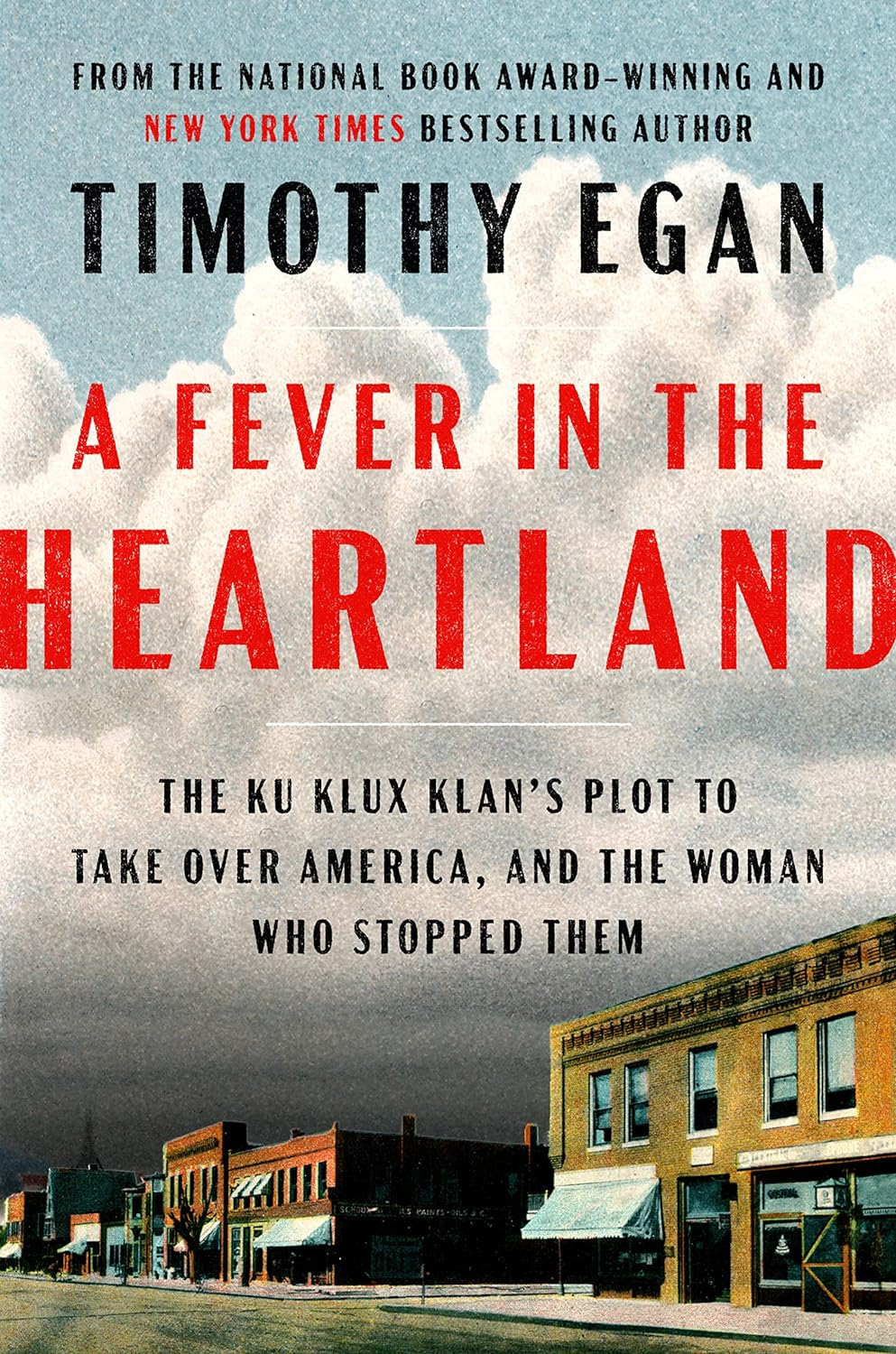This year, I served as a judge for the Robert F. Kennedy Book Award. Timothy Egan’s “A Fever in the Heartland: The Ku Klux Klan’s Plot to Take Over America, and the Woman Who Stopped Them” received an honorable mention in recognition of its over-all excellence and timeliness. Why is it especially timely? Because it tells the story of how an obsessive hatred of immigrants and people of color and deep-seated fears about the empowerment of women led to the rise of a form of fascism in Indiana.
I knew this story from a class I took in college. Back then, I saw it as a fantastical tale from a never-to-be-repeated past. Now, at a moment when hostility toward immigrants has reached a fever pitch in some quarters—“A caravan from Mexico is coming,” “They’re eating people’s pets”—and when disrespect for women’s bodily autonomy is driving policy proposals, what happened in Indiana back in the Jazz Age is a sobering reminder of just what American society has been and could be again.
The book recounts the harrowing story of the Ku Klux Klan’s dominance of nineteen-twenties Indiana. The Klan controlled the entire state, largely through the machinations of one man: David C. (D. C.) Stephenson. A grifter originally from Texas, Stephenson became the Grand Dragon of the Indiana chapter. Although he never held an official government position, at the apex of his power he could proclaim, without irony, “I am the law.” And many of the freeborn citizens of the American republic had no problem living under his dictates, even as he blighted the lives of their fellow-citizens.
The Klan had a strong presence in other states, too. Egan notes that the group “was the largest and most powerful of the secret societies among American men—bigger by far than the Odd Fellows, the Elks, or the Freemasons, and vastly greater in number than the original Klan born in violence just after the Civil War.” In 1925, in a show of force, thousands of Klansmen marched in Washington. But the situation in Indiana was notable for having a single charismatic figurehead to whom many people eagerly pledged their allegiance.
Stephenson helped put the governor of the state, the Klansman Ed Jackson, in office. He controlled police departments, judges, and politicians, and he allied with them to promote the Klan’s interests, which included terrorizing people whom he considered insufficiently American. He insisted that none of this was about hate; it was simply a matter of promoting Americanism. The presumptive outsiders included all nonwhite people, immigrants, Catholics, and Jews. Stephenson had his own private police force of thirty thousand men, who were given the authority to enforce the Klan’s “law” by means of physical intimidation.
